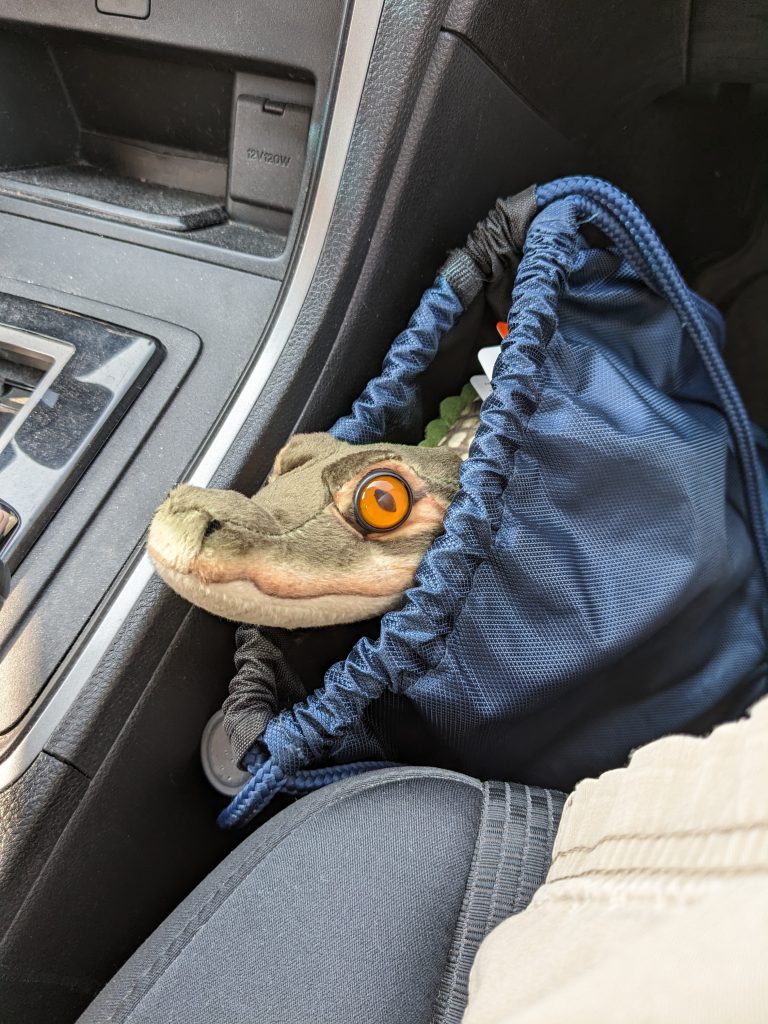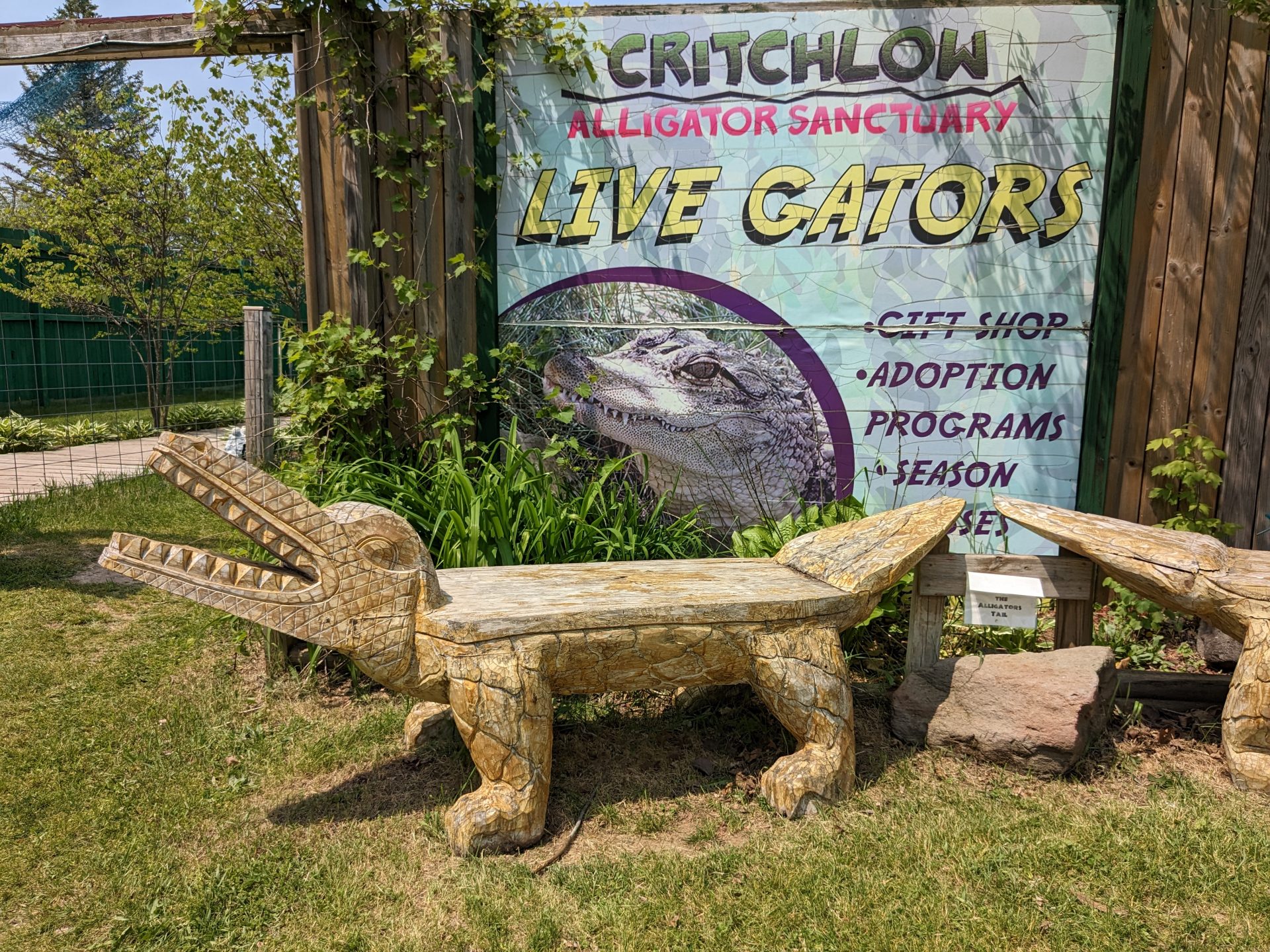I’m a fan of animals, zoos, and visiting local attractions. So, when I was browsing a Reddit thread asking for things to do in southwest Michigan, I was surprised to learn that there was an alligator sanctuary just a little ways south of Battle Creek, in Athens.
- Website: https://alligatorsanctuary.wixsite.com/alligatorsanctuary
- Facebook: https://www.facebook.com/alligatorsanctuary/
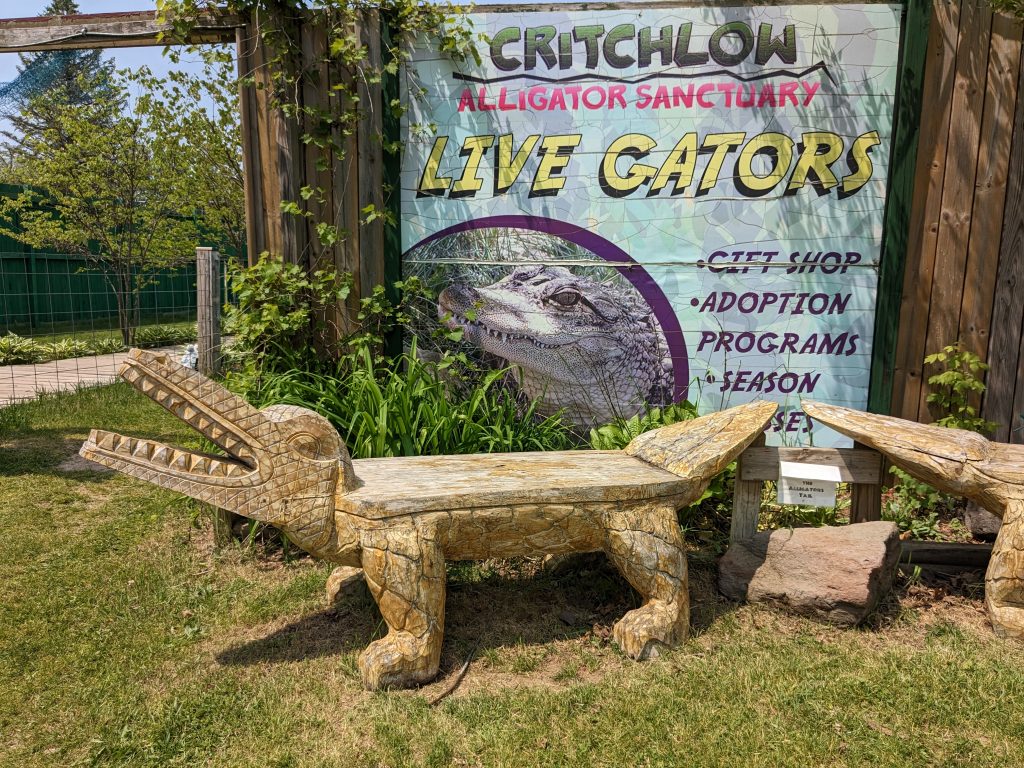
An alligator sanctuary, in Michigan? Sounds crazy, right? Well, it is a little crazy, but that’s part of the charm, and it serves a very important purpose — being the only place that can rescue the various bad idea pets, educational animals, and zoo hand-offs that would otherwise be released to their detriment, euthanized, or otherwise not properly cared for.
Before I decided to visit, I wanted to do a little research. You know; make sure it’s a legitimate organization, and not some kind of shady alligator farm or somebody’s pet garden they turned into a money-making opportunity. Well, I’m happy to say that it’s a great institution. Mr. C, the founder and owner, has a real passion for rescuing and caring for these animals, and he’s recruited a lot of people — family members and passionate outsiders — to do the same.
Driving out to the sanctuary was an enjoyable time. It’s about 35-40 minutes from home on the back roads, and since it’s in a small village, it’s a quiet area. The only sign you get that the sanctuary is there is, well, this sign:
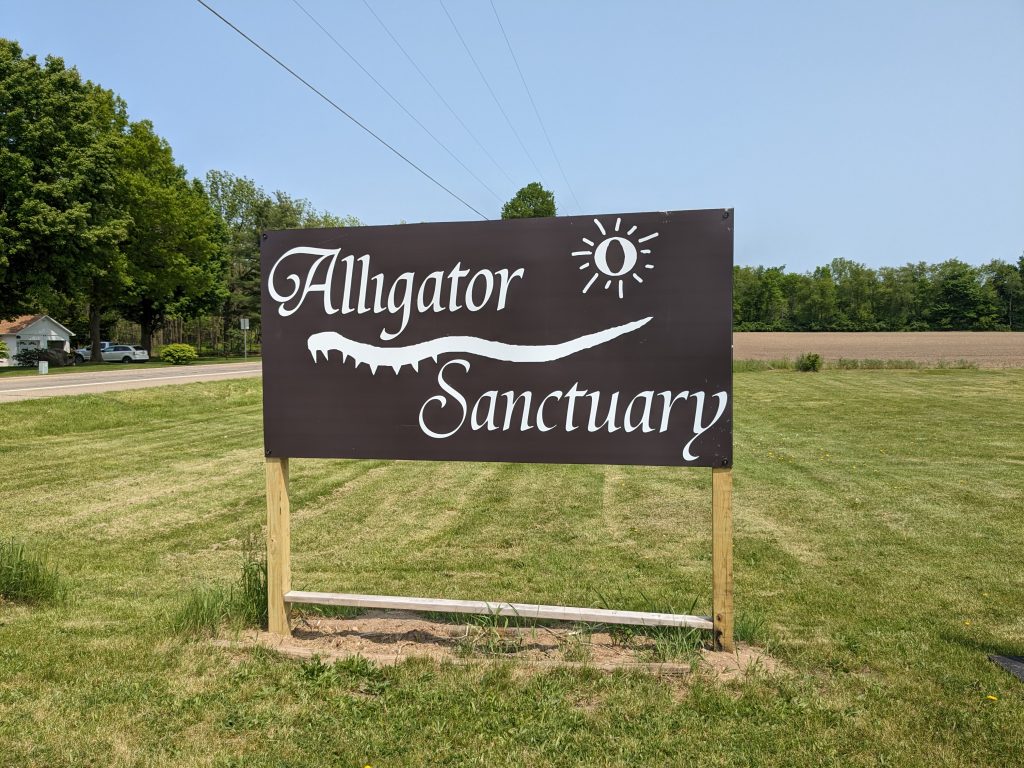
When we arrived, we were greeted at the front window by the daughter of the owner. We bought a cup of food and followed the path inside. We later learned that the food is specially-produced kibbles and biscuits of gator food made by Purina, of which this sanctuary is a significant buyer.
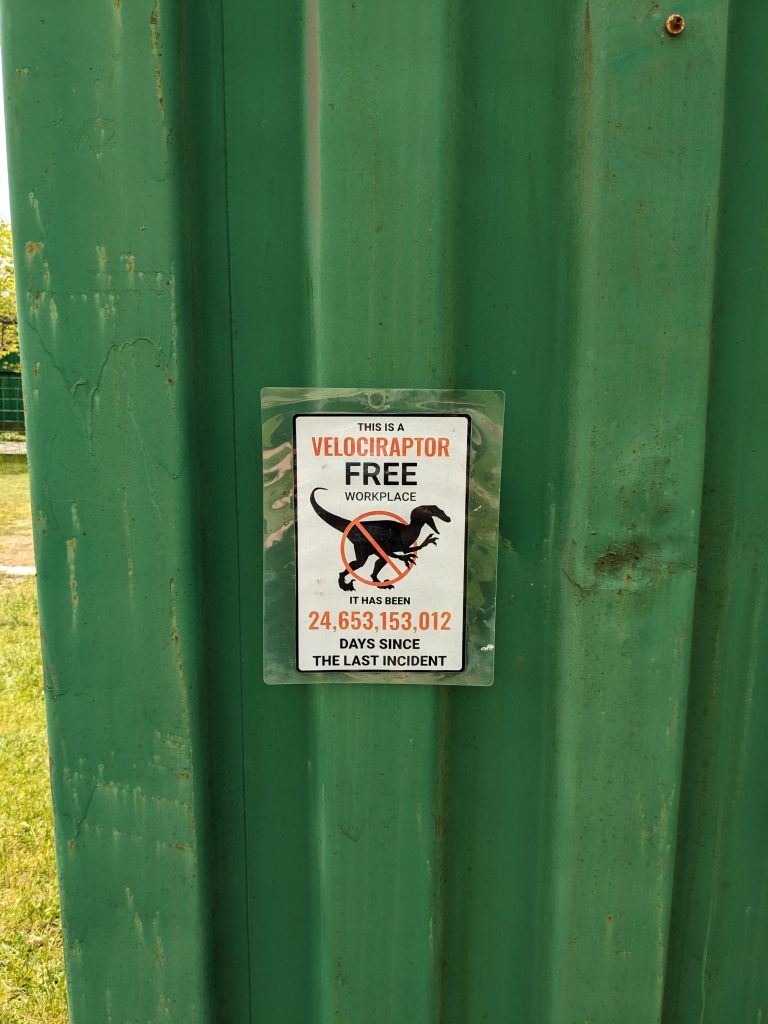
A guided tour is included with the price of admission, and as it turns out, ours was handled by none other than Mr. C himself! He informed us that he just got done shepherding a gaggle of grade schoolers on a field trip, so he’d need to calm down a bit as he started us off, but that’s fine. As the only two in the sanctuary, we were more than happy to take our time. (We were shortly joined by another couple, but it was just the four of us the whole way through.)
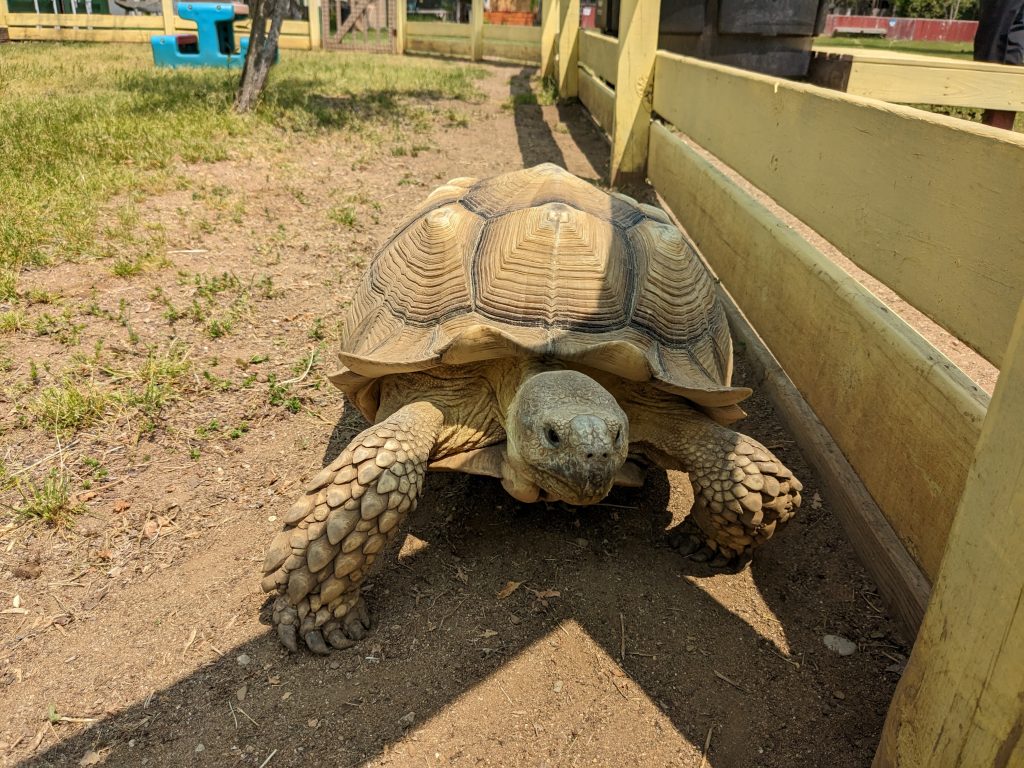
Alligators aren’t the only critters around at this sanctuary. Right at the outset, there’s a collection of African tortoises wandering about, munching on grass and basking in the sun. This is one of the few animals that aren’t crocodilian in the sanctuary (there’s also a few others in the gift shop and office space, including an alligator snapping turtle, a snake, and a handful of others). There’s also a turtle pond later on in the sanctuary.
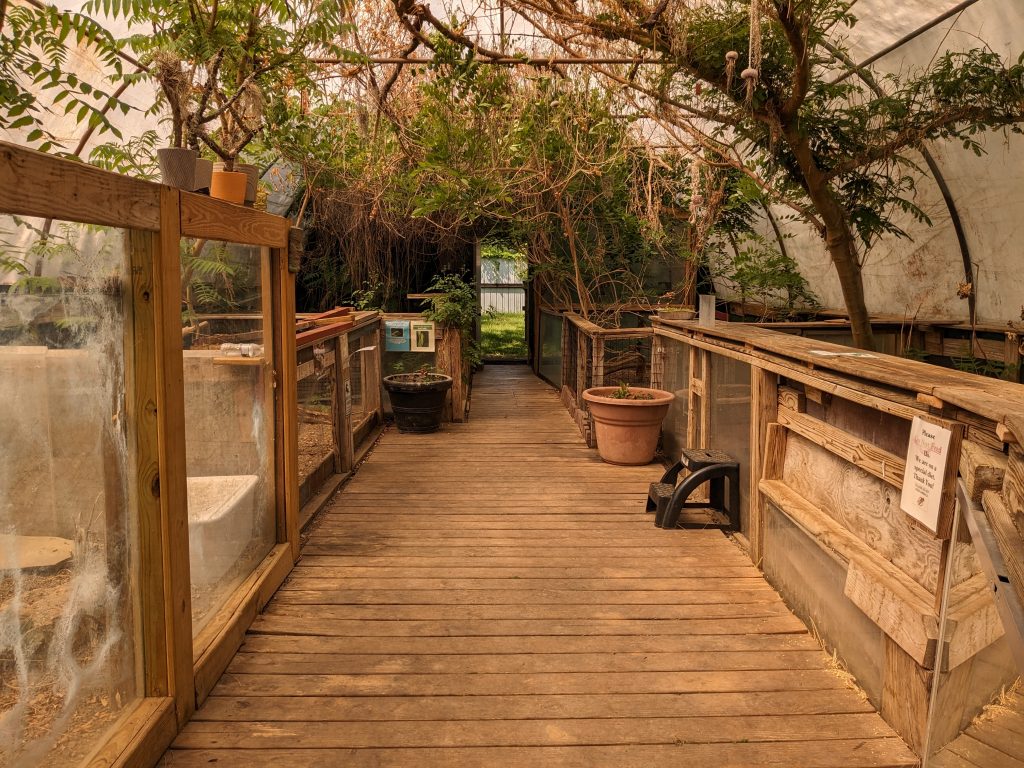
Next stop was the greenhouse, which was originally the only place they could keep their alligators in the winter. Now it’s home to a few of the more shade-loving creatures, like their caiman Diablo. We were a bit early in the season for the full array of the exhibit to be available, but that’s fine.
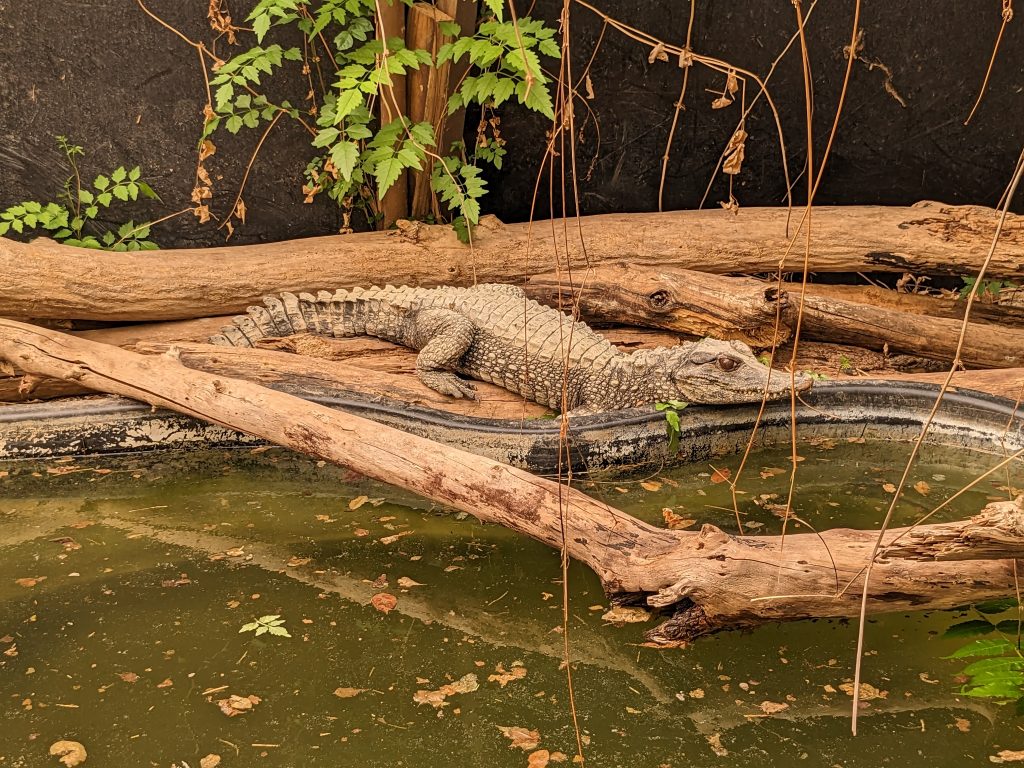
As an introduction to the rest of the sanctuary, Mr. C told us about how the gators are divided up. They’re broadly grouped in “schools”, based mostly on age and length. Some gators they get have been stunted in their growth (largely due to a lack of UV exposure and nutrition) so, while most of the gators in the smaller areas are young, some are much older, but wouldn’t be able to fit with others their age because they’d be viewed more as food than as other gators.
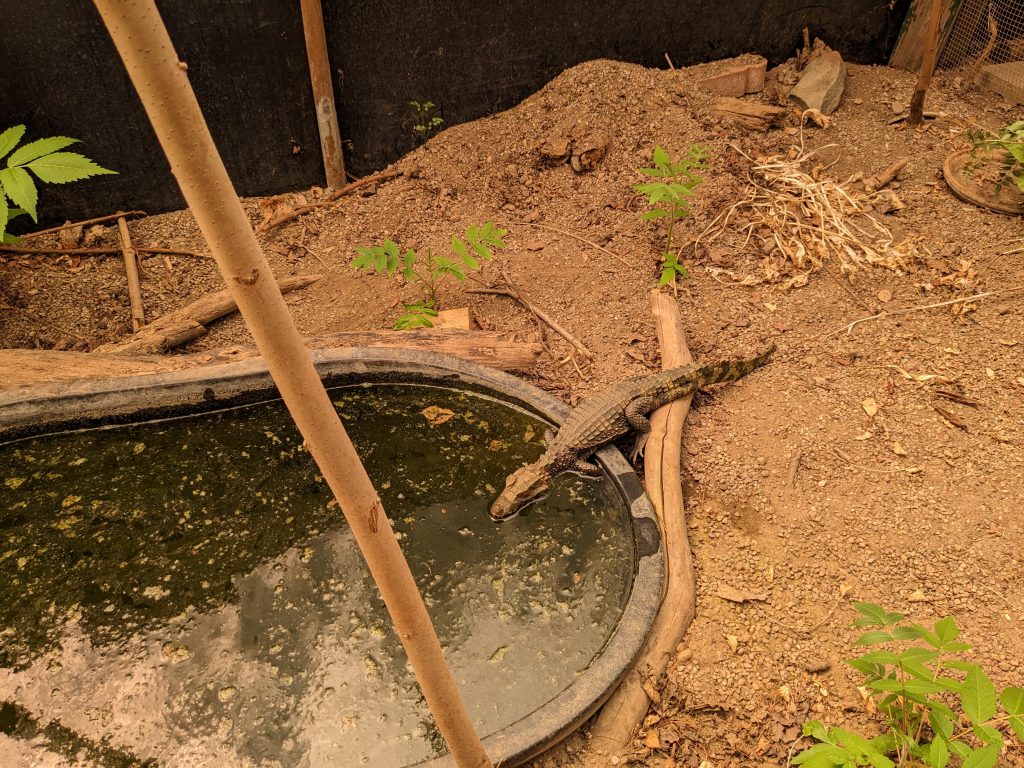
The alligator pre-school is where all of the under-3-year-old gators hang out. It’s a sheltered bit of swampy area also in the greenhouse, where the young gators are cared for and protected from things like blue herons, which will happily eat them.
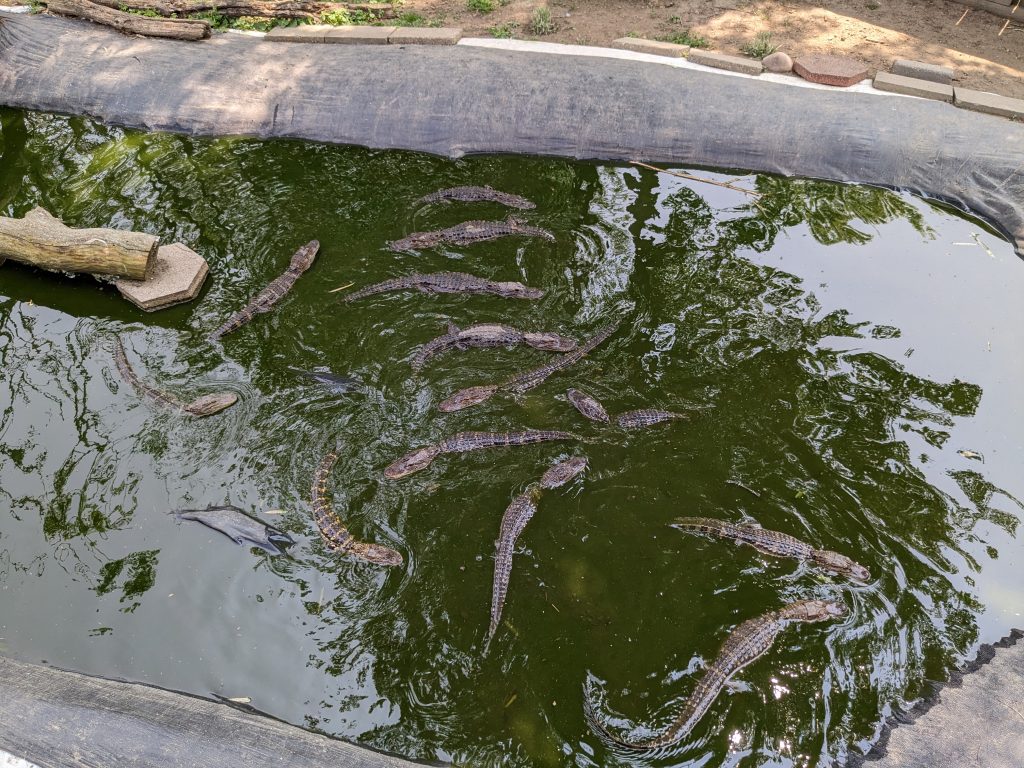
Next up is the elementary, where 3-5 year old gators live. I even got to help put one back in the pond! Normally animal encounters are extra, but they had a couple of animals out for school trips that needed to be put back at home, and they let me release one of them.
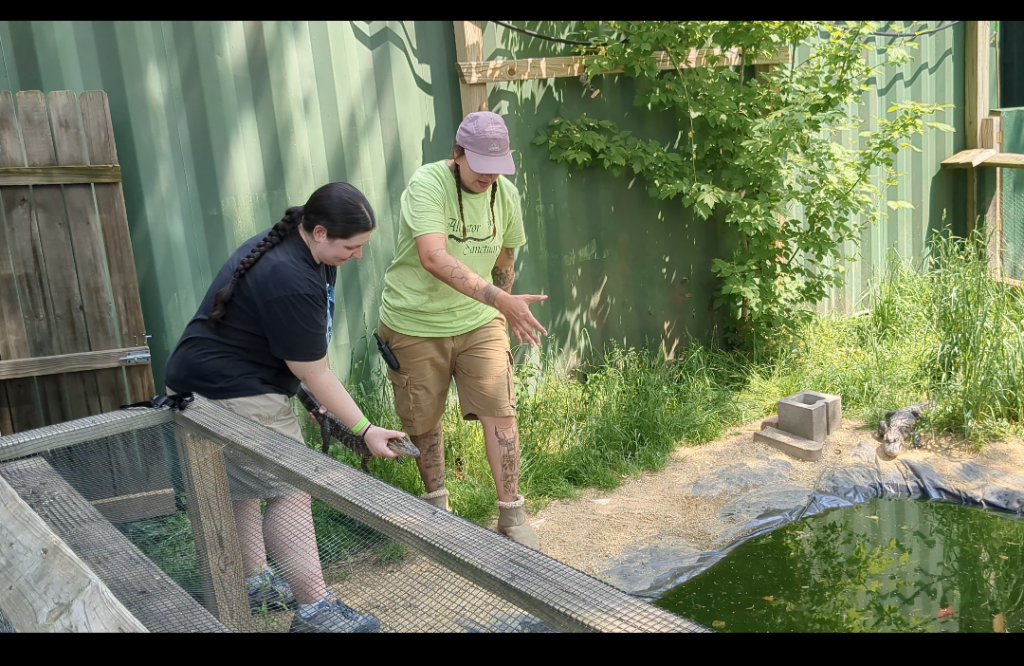
I’ve handled lizards of about this size before (my iguana was around this big) so I knew more or less how to handle them safely, and it’s really not a big deal to push a gator of this size back out into a pond. The gators aren’t aggressive, especially at this size; Mr. C calls them “Frogs with teeth.”
I love the little chirpy noises they make at this age. It’s almost a laser beam “pew” noise. You can hear it on a video like this one (not from this sanctuary), but it’s way adorable in person.
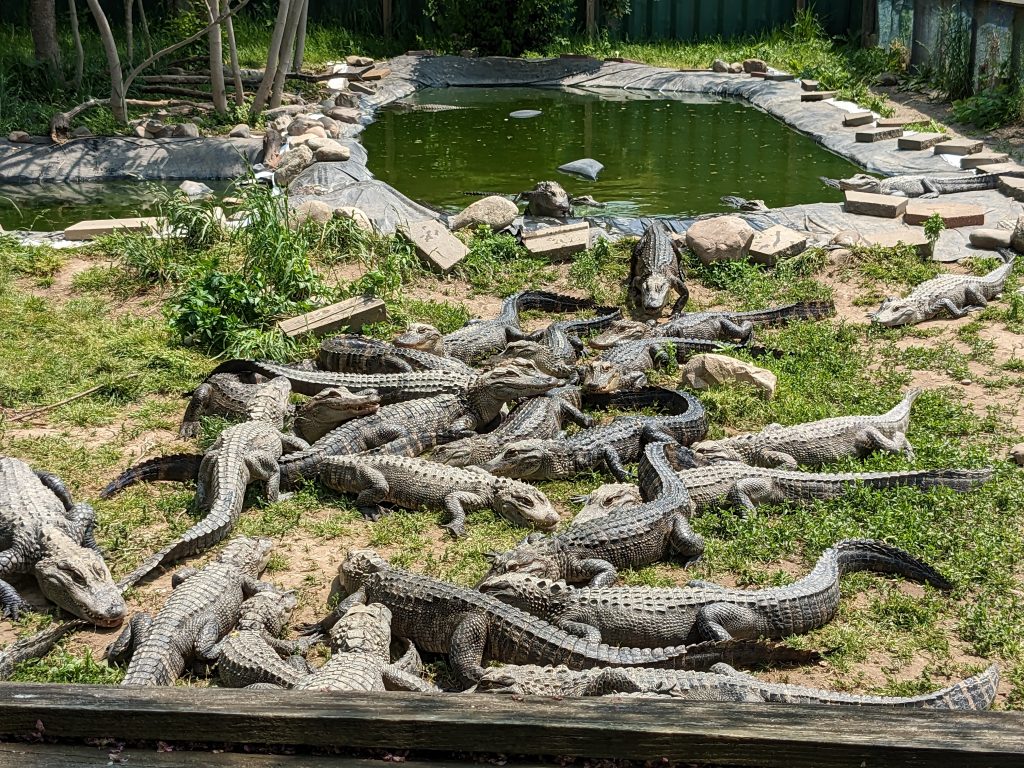
After the elementary is the middle school. You can also see some of the gators with defined, light-colored stripes. These are newer arrivals! The stripes fade over time as they get the amount of sun exposure they’re meant to have, and as they get older.
This is where they’re starting to be identified and trained; while the younger ones know that someone showing up with a food cup means food, these ones will respond to someone shouting “HEY GATORS!” and will come right up for their snacks.

Gator high school is where the older gators are reaching adolescence. They’re being trained here, to recognize their names, some colors and objects, and some word commands. You can also see more social behaviors showing up here.
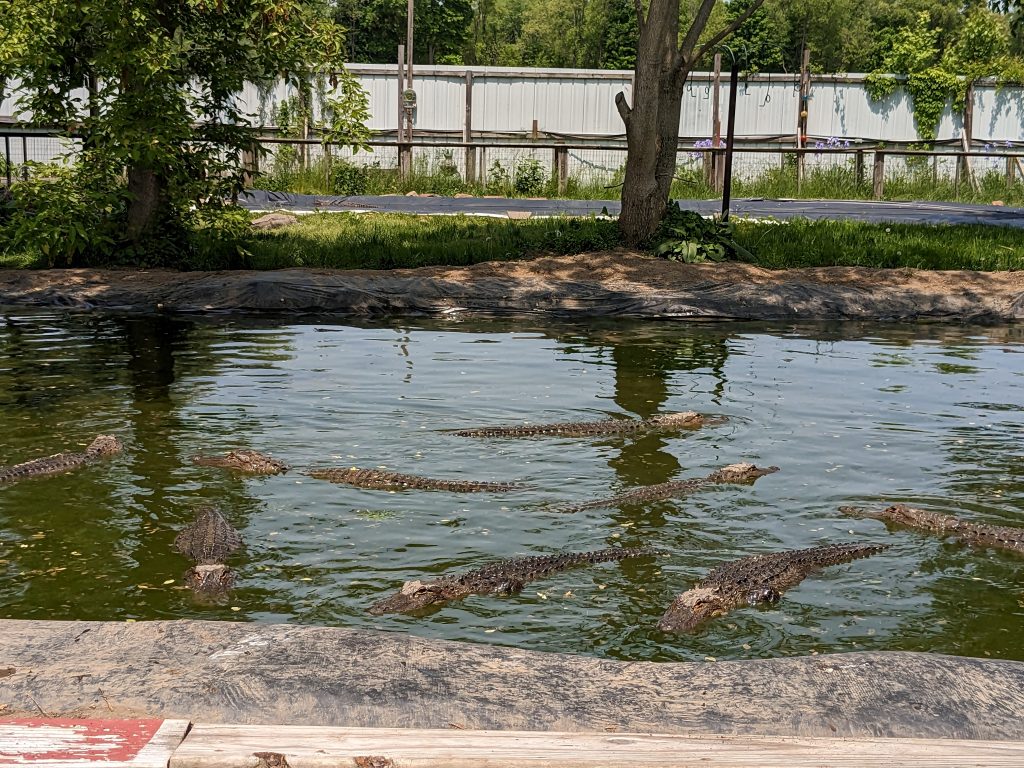
They get more training and can put on shows, though they’re certainly not a spectacle. No “leap out of the water at a chunk of meat” here; just some word-response training and some biscuit treats. You do get to see the dominant gators chasing off the others, and can occasionally hear other noises they make.
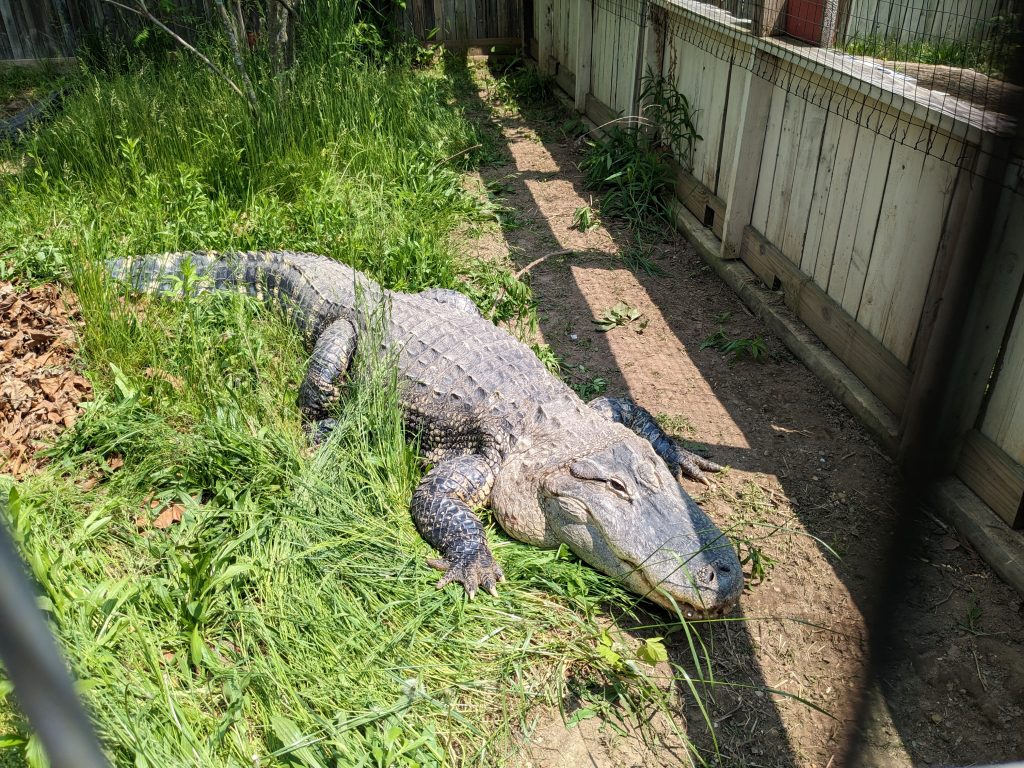
Throughout all of this, Mr. C was giving us all sorts of stories about specific gators and their places in the pecking order, and their backstories. Some of these were kept by college students and fed terrible diets. Some came from zoos that closed down or closed their gator exhibits. Some were caught by animal control, used in schools, or elsewhere. It’s fascinating how varied their origins are.
After this, there are a few gators that had their own enclosures. There’s Casanova, a gator that was bullied by females he tried to court and had such bad self-esteem he wasn’t safe anywhere but on his own. There’s also Lyle the Nile Crocodile, one of the few non-gator crocodilians in the sanctuary. He’s kept on his own because he’s a lot more dangerous.
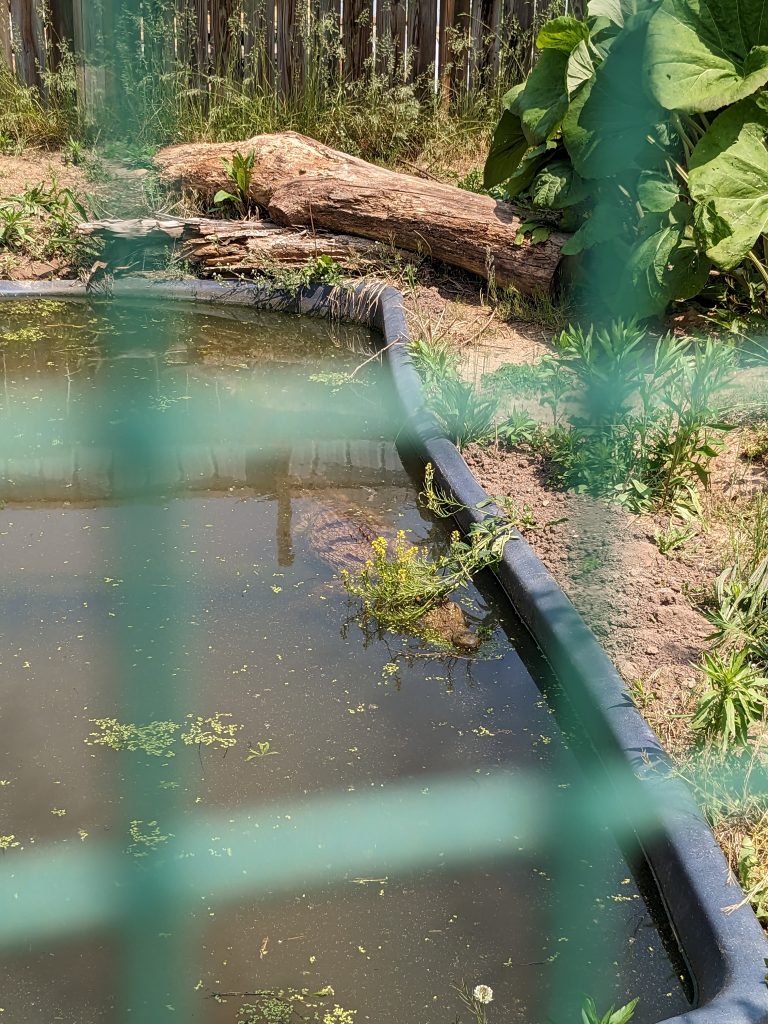
Finally, at the end of the road, there’s the two giants: Godzilla and Medusa. These are older and much larger gators, and they’re well trained, such that Mr. C can climb right in with them and give them commands (and treats) as part of a demonstration.
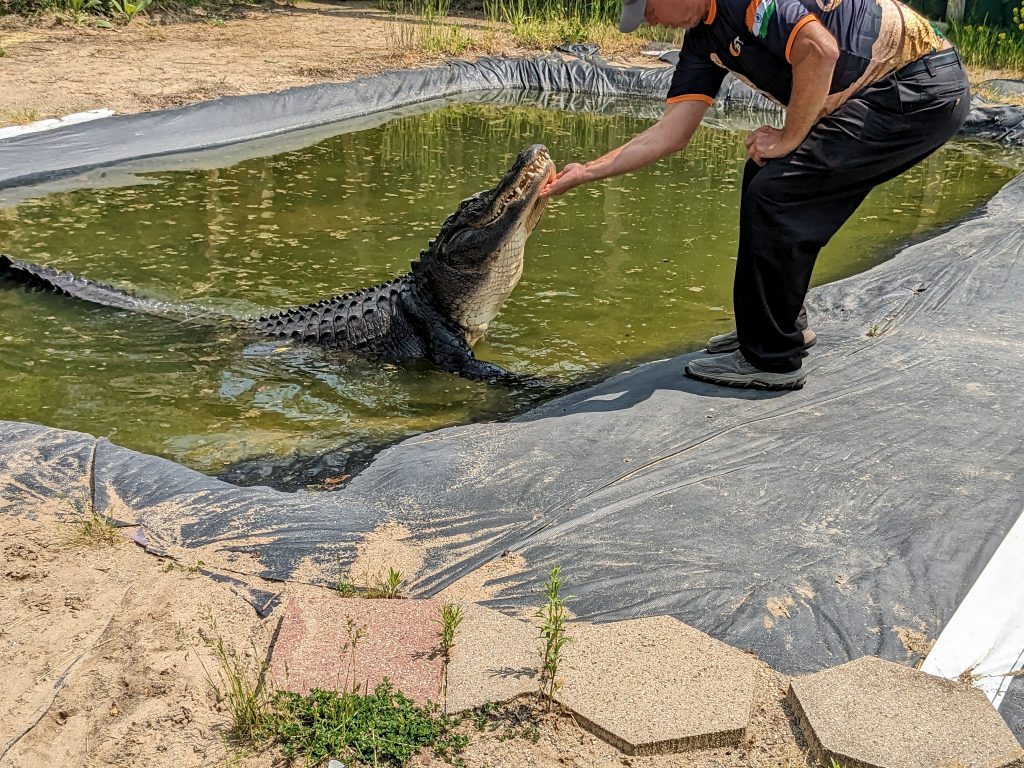
All in all, I was pretty surprised both by how many gators are here, and how cool the whole place was. The pictures don’t really do it justice! You need to hear the sounds, get to feed them, and check out all of the fun little decorations scattered all throughout the area.
If you’re interested in alligators or you’re anywhere near the Battle Creek area, I highly recommend checking out this sanctuary. It’s owned and staffed by knowledgeable, passionate people, the gators are well cared-for, and it’s an all-around really enjoyable time.
I even got to take one home!
